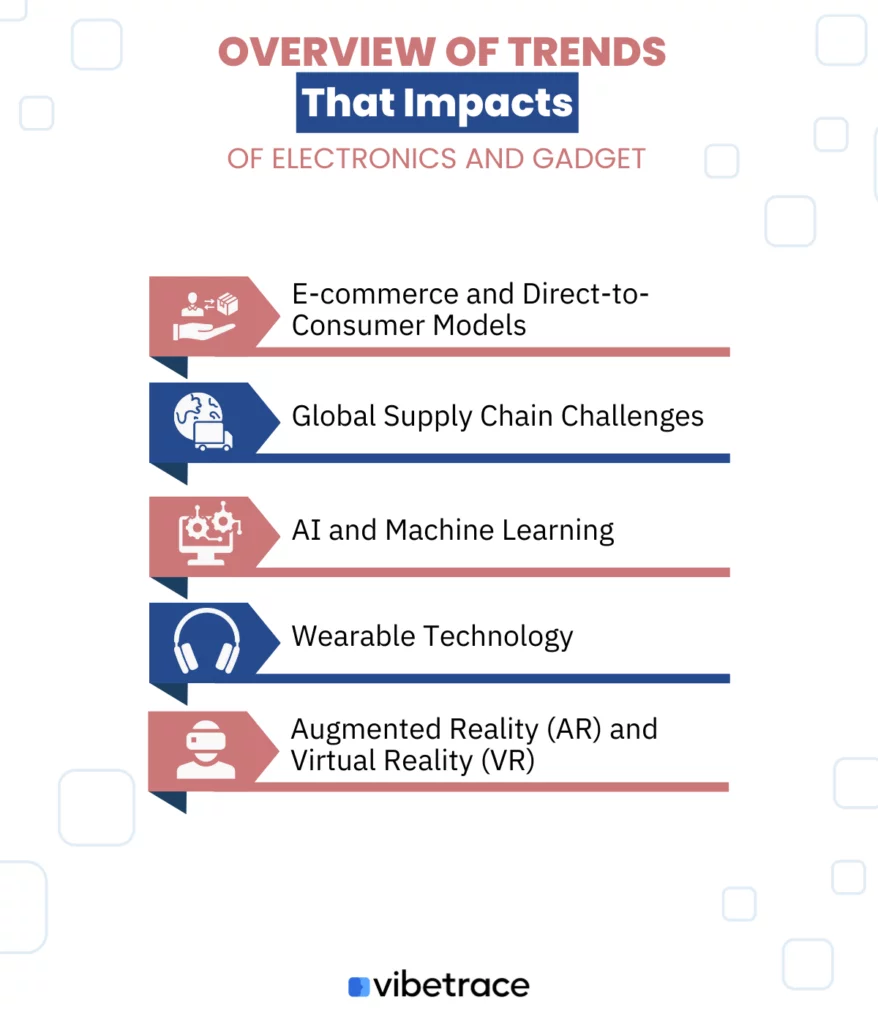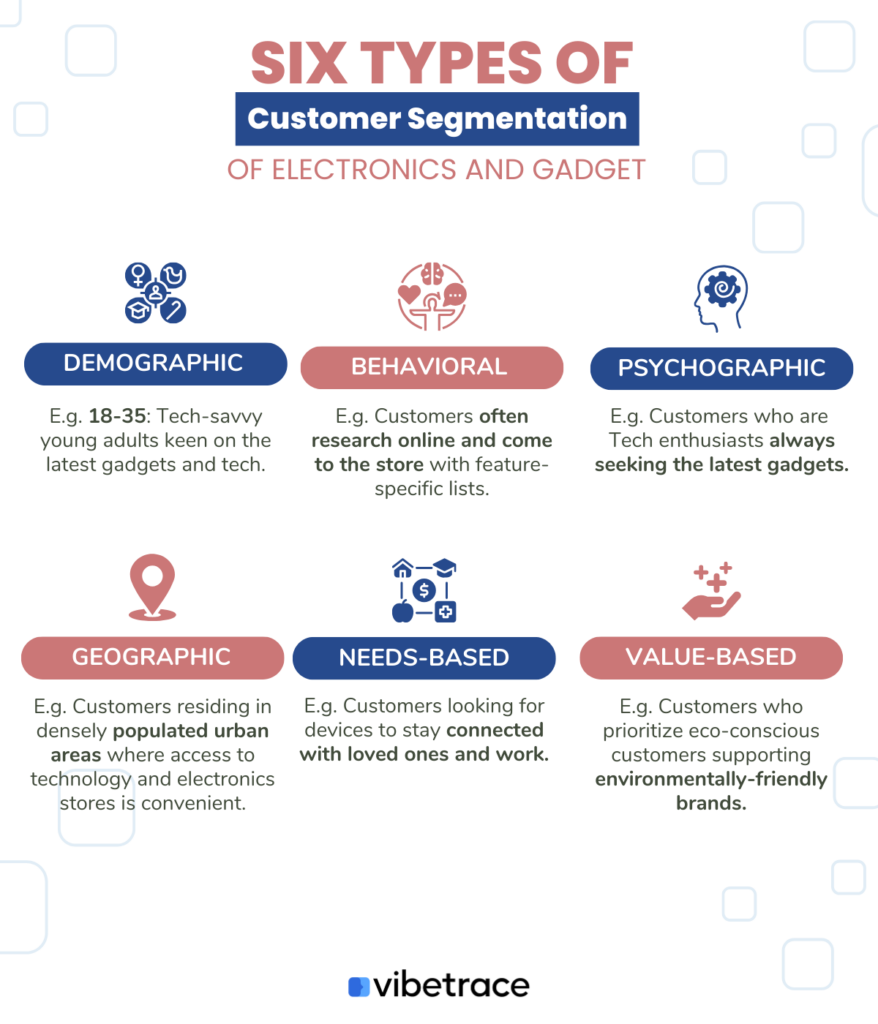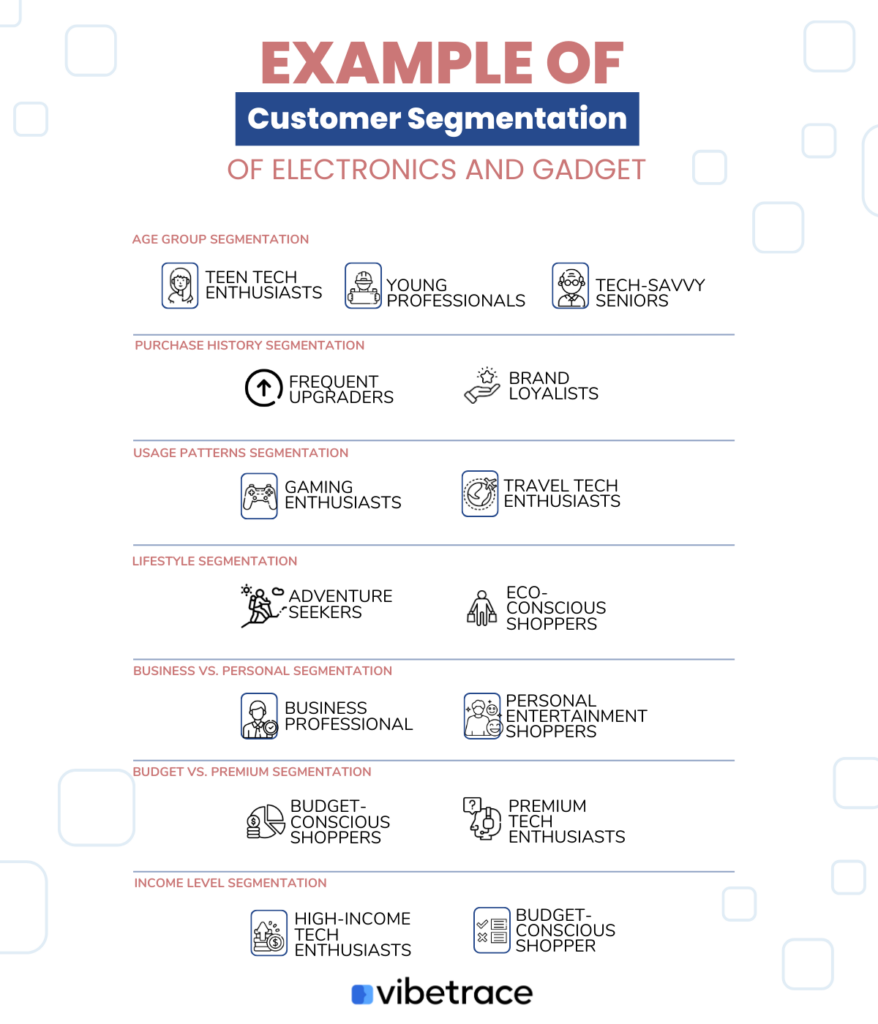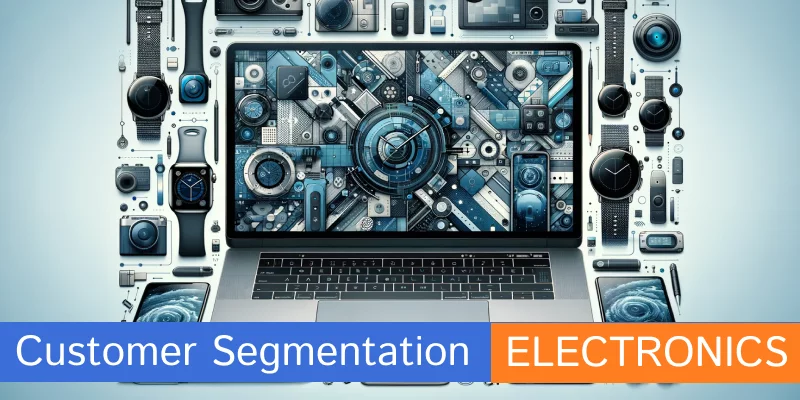In today’s fast-paced and constantly changing world of electronics and gadgets, it’s absolutely crucial for business owners to grasp the importance of comprehending and engaging with their target customers.
To succeed in this competitive landscape, you need to adopt a strategic technique known as customer segmentation.
Electronic and gadget stores can boost customer satisfaction and expand business by personalizing marketing strategies, product selections, and communication channels.
Identifying the appropriate target audiences within these segmented groups empowers businesses to customize their strategies accordingly, addressing each customer segment’s unique requirements and preferences.
Additionally, we will explore a variety of customer segmentation approaches, each offering a unique angle to examine your esteemed customers.
You will gain important insights into which model best fits your unique needs and preferences, ranging from demographic segmentation covering age, gender, income, and education to behavioral segmentation highlighting purchase patterns and brand loyalty.
Let’s explore this and uncover the major trends shaping the electronic and gadget industry.
Overview of Trends Impacting the Electronic and Gadget Industry

As an innovative small business owner, it’s vital for you to stay ahead of the curve. That’s why we’re here to give you a comprehensive glimpse into the latest trends driving the electronic and gadget industry.
Whether you’re a small business owner who lives and breathes technology, an entrepreneur eagerly seeking the latest innovations, or an industry expert fully immersed in the digital landscape, embracing the ever-evolving trends that mold this dynamic sector is an absolute must.
Additionally, there has been a surge of captivating developments in the electronic and gadget sectors. Explore a few of the prevailing trends in this dynamic industry:
E-commerce and Direct-to-Consumer Models
E-commerce and Direct-to-Consumer (DTC) models are stealing the spotlight. They give you the power to purchase electronic gadgets straight from the source, cutting out the traditional retail channels altogether.
This modification aims to enhance your convenience and provide you with more options.
Just envision the possibilities of being able to browse through a wide range of cutting-edge devices, all from the comfort of your own home or while you’re on the move, thanks to the availability of online platforms and mobile applications.
Global Supply Chain Challenges
Global supply chain disruptions, particularly the scarcity of semiconductors, have had a negative impact on the manufacturing and accessibility of highly sought-after technological gadgets.
The shortage of semiconductors poses a major hurdle in the global supply chain, causing the industry to grapple with challenges. This obstacle has had a far-reaching impact, affecting the production and availability of electronic gadgets.
AI and Machine Learning
In today’s rapidly evolving world of electronic gadgets, one undeniable trend that stands out is the seamless integration of artificial intelligence (AI) and machine learning.
These innovative technologies serve as the secret ingredient that is revolutionizing the way you engage with technology. Whether it’s your smartphone or the smart devices in your home, the power of artificial intelligence is driving numerous advancements, enhancing your user experiences like never before.
Wearable Technology
As a business owner, we understand that you are constantly maneuvering through the ever-changing world of technology trends. It’s hard not to notice the rapid rise of wearable technology, which has become a prominent player in the market. Smartwatches, fitness trackers, and even augmented reality (AR) glasses have captivated the minds of consumers.
These cutting-edge gadgets do more than just provide a sneak peek into what’s to come. Brace yourself, because wearable technology goes beyond just monitoring your well-being. It revolutionizes the way you go about your everyday tasks, enhancing your productivity to new heights.
These cutting-edge devices are designed to seamlessly integrate into your lifestyle, empowering you to become even more connected and efficient than ever before.
Want to be up to date with Marketing?
Subscribe to our Retail CX newsletter!

Stay connected with what’s really important to optimize your digital revenues.
By clicking the button, you accept our Terms & Conditions. Also you will need to confirm your email address.
Augmented Reality (AR) and Virtual Reality (VR)
As you delve into the exciting realm of technology, you’ll be thrilled to discover how Augmented Reality (AR) and Virtual Reality (VR) are breaking free from their gaming origins. These transformative technologies are now making their presence felt in diverse sectors, far beyond the gaming world.
In fields like training and professional development, AR and VR are becoming invaluable, providing hands-on, risk-free practice scenarios for everything from medical procedures to aircraft maintenance.
These immersive experiences are reshaping industries, offering you opportunities to explore, learn, and train in ways that were once considered science fiction but are now very much a part of your tech-driven reality.
Understanding People Who Buy Electronic and Gadget Store Products
Understanding the wide range of individuals who buy electronic and gadget store products is crucial for business owners. It’s important to acknowledge that consumers’ motivations, preferences, and behaviors can vary greatly.

It’s possible that you identify with this group or that you find it fascinating to learn about other people’s reasons. Some people have a strong desire to stay on the cutting edge of technology when it comes to technological devices. With a persistent desire to discover new possibilities, they seek out the most cutting-edge and cutting-edge technology accessible.
Beyond these broad categories of consumers, there’s a myriad of specific interests and motivations that drive people to buy electronic and gadget store products.
Moreover, the age and tech-savviness of consumers play a crucial role. Younger generations often gravitate towards the latest trends and innovative features, while older individuals may prefer simplicity and ease of use.
Understanding these differences can help both consumers and manufacturers navigate this exciting landscape. Whether you’re an early adopter, a tech enthusiast, or someone who simply seeks functionality and convenience, there’s a gadget store product out there tailored to your needs and desires
Customer Segmentation Model: Definition and Benefits
It’s critical to take into account a client segmentation model when attempting to comprehend the different terrains of buyers of electronics and gadgets. This concept assists companies in customizing their offerings and marketing plans to address the distinctive requirements and preferences of diverse customer groups, including your own.
This model serves as a compass for businesses, enabling them to finely calibrate their products and marketing strategies to cater to the diverse needs and desires of consumers like yourself.
This customer segmentation model is your guide to navigating the diverse world of electronic and gadget offerings, ensuring that there’s a device perfectly suited to your tech preferences, whether you align with one of these segments or find yourself straddling multiple categories.
Types of Customer Segmentation Models

Demographic Segmentation
Customers in this model are divided according to demographic characteristics, including age, gender, income, level of education, and marital status. It enables firms to customize their offerings and marketing initiatives for particular age, gender, or economic demographics.
Old people do not spend thousands on the latest Iphone. They might look for more simple to use gadgets and electronics.
Behavioral Segmentation
Behavioral segmentation analyzes consumer engagement with goods and services, utilizing past purchases, trends, brand involvement, and loyalty to target loyal customers or brand promoters.
For example, purchase of a Smart TV can trigger purchase of a game console at a later stage.
Psychographic Segmentation
Customer lifestyles, values, beliefs, and personality attributes are examined in psychographic segmentation. It aids companies in developing a deeper understanding of their customers and in developing marketing that appeals to their psychological traits.
Geographic Segmentation
Geographic segmentation separates clients by area, city, or nation. It’s especially helpful for companies whose goods or services have unique local appeal or regional differences.
You will see that some geographies (or even cities in the same country) are eager to spend more buying expensive TV-sets compared to others cities
Needs-Based Segmentation
Needs-based segmentation categorizes customers based on their unique needs and issues, enabling companies to develop tailored solutions to meet these demands and problems.
Value-Based Segmentation
Focusing on customers’ perceptions of value is value-based segmentation. Based on their willingness to pay for quality, features, or special perks, it divides customers into several categories. This approach aids companies in matching their value and pricing offerings to what customers are expecting.
How to Choose a Customer Segmentation Model for an Electronic and Gadget Store
Opting for a segmentation model for a electric and gadget store requires making the appropriate choice. Let’s explore the steps to accomplish this:
Define Segmentation Objectives
Clear segmentation goals are crucial for identifying profitable customer segments, understanding their preferences, refining product targeting, and ensuring specific insights are sought.
Collect and Prepare Data
Gather accurate, up-to-date, and well-organized data such as demographics, purchase history, and behavior patterns to establish a foundation for segmentation.
Choose a Segmentation Method
Choose a segmentation method that aligns with your objectives and data, such as demographic, behavioral, psychographic, geographic, needs-based, or value-based, depending on your customer base’s emphasis.
Apply the Chosen Model
Utilize software or tools to efficiently categorize your customer base into distinct segments based on selected criteria.
Evaluate and Refine
Assess your segmentation model’s effectiveness, align it with objectives, and adjust if needed to better meet business needs and customer insights.
Example of Customer Segmentation for Electronic and Gadget Store Consumers

Age Group Segmentation
Teen Tech Enthusiasts: Customers aged 13-19 who are early adopters of the latest gadgets and gaming consoles.
Young Professionals: Customers aged 20-35 who seek productivity-enhancing devices like laptops, smartphones, and smartwatches.
Tech-Savvy Seniors: Customers aged 60+ who are interested in user-friendly devices like tablets and easy-to-use smartphones
Purchase History Segmentation
Frequent Upgraders: Customers who frequently upgrade to the latest smartphone models.
Brand Loyalists: Customers who consistently purchase products from specific brands within the store.
Usage Patterns Segmentation
Gaming Enthusiasts: Customers who regularly buy gaming consoles, accessories, and games.
Travel Tech Enthusiasts: Customers who purchase travel gadgets like noise-canceling headphones, portable chargers, and travel adapters.
Lifestyle Segmentation
Adventure Seekers: Customers who prefer rugged and durable gadgets suitable for outdoor activities

Eco-conscious Shoppers: are customers who prioritize eco-friendly gadgets and energy-efficient devices.
Business vs. Personal Segmentation
Business Professionals: Customers looking for gadgets that enhance productivity and support remote work
Personal Entertainment Shoppers: Customers interested in gadgets for entertainment and leisure
Budget vs. Premium Segmentation
Budget-conscious Shoppers: are customers who prioritize affordability and value for money.
Premium Tech Enthusiasts: Customers willing to invest in high-end, feature-rich gadgets
Income Level Segmentation
High-Income Tech Enthusiasts: Customers with substantial disposable income who are willing to invest in premium electronic gadgets.

Budget-conscious shoppers: customers with limited income who seek affordable electronic options.
Purchase Channel Segmentation
In-Store Shoppers: Customers who prefer the in-store shopping experience for hands-on evaluation
Online Shoppers: Customers who favor online platforms for convenience and a broader product selection.
Wrapping Up
In conclusion, the world of electronic and gadget retail is a dynamic and ever-evolving landscape where staying attuned to consumer preferences is paramount. The trends impacting this industry, from the surge in e-commerce to the adoption of eco-friendly materials, underscore the need for businesses to adapt and innovate continuously.
Choosing the right segmentation model is a strategic decision that empowers businesses to connect with their customers on a deeper level, ensuring that the latest gadgets find their way into the hands of those who value them most.
Check out some of the many features Vibetrace offers!

